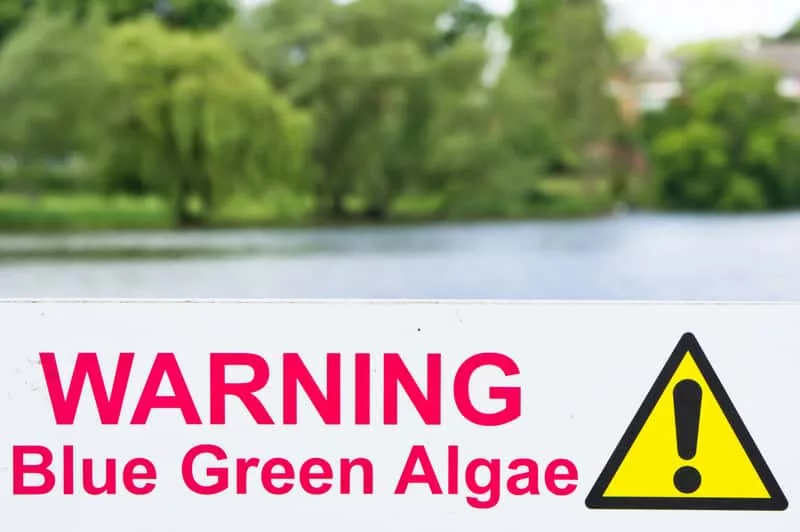The dog days of summer can be bad enough, but recent alarming news about toxic blue-green algae blooms on inland lakes and streams is turning the dog days of summer into tragedy for some of our four-legged friends.
If you are not already aware of the disturbing news, please pay attention. Blue-green algae can be fatal to your dog if he or she swims in, or in some cases if they even play near, inland bodies of water affected by the algae in late summer.
So far we don’t know of any tragic losses in our immediate region, however the caution flag is being raised by officials to protect pets everywhere, especially in light of news that toxic algae has now been identified in 48 U.S. states according to Dr. Joseph Mercola.
High heat, lack of wind and fertilizer build-up all contribute to the “perfect storm” of algal blooms even in cases where it is not visible on the surface of the water, instead found suspended at varying depths below the surface.
There are registered incidences of fatal pet encounters with blue-green algae in North Carolina, Texas, Wisconsin, Georgia, Maryland, and even as close as Grand Rapids here in Michigan.
Blue-Green Algae, or scientifically known as Cyanobacteria, is a form of microscopic bacteria found in freshwater lakes, streams, ponds, and brackish water ecosystems. They can produce toxins that effect people, livestock and pets that swim in and drink from the algae-contaminated water.
The blue-green algae grow and colonize to form “blooms” that give the water a blue-green appearance or a “pea-soup” like color according to the Pet Poison Helpline. The helpline notes that because the algae float, they may be blown by the wind into thick, concentrated mats near the shore, thus making them easily accessible to livestock, pets and people.
While the algae concentrations can vary throughout the year, they are most abundant during periods of hot weather in the mid- to late-summer months and are most likely to be found in nutrient-rich water. While most such blooms do not produce toxins, it is not possible to determine their presence without testing. As a result, all such blooms should be considered potentially toxic, inasmuch as even very small exposures such as a few mouthfuls of algae-contaminated water, may result in fatal poisoning.
Dogs that enjoy swimming and playing in lakes and ponds may be exposed to the algae. Clinical signs of poisoning are dependent on the toxin involved. Microcystins can result in liver damage or failure. Signs of liver injury include vomiting, diarrhea, blood in stool or black, tarry stool, weakness, pale mucous membranes, jaundice, seizures, disorientation, coma and shock. Death generally follows within days as a result of liver failure.
Anatoxins result in neurotoxicity evidenced by excessive secretions (salivation, lacrimation) neurologic signs (including muscle tremors, muscle rigidity, paralysis) blue discoloration of the skin and mucous membranes and difficulty breathing. Death follows within minutes to hours of exposure as a result of respiratory paralysis.
Unfortunately, the Pet Poison Helpline says, “There is no antidote for the toxins produced by blue-green algae. Immediate veterinary care is imperative.”
Not all algae is poisonous, but authorities caution that it’s best for pets to stay out of water where blooms are found.
If you are concerned and would like to have water tested from an area near you, Dr Ann St. Amand looks at algae and can screen for toxic blue green concerns through her scientific company, PhycoTech which is headquartered in old city hall in downtown St. Joseph. You can reach her at 269-983-3654. Her firm was a winner of the Moody on the Market 15 Under 15 Best Small Companies in Michigan’s Great Southwest last year.






